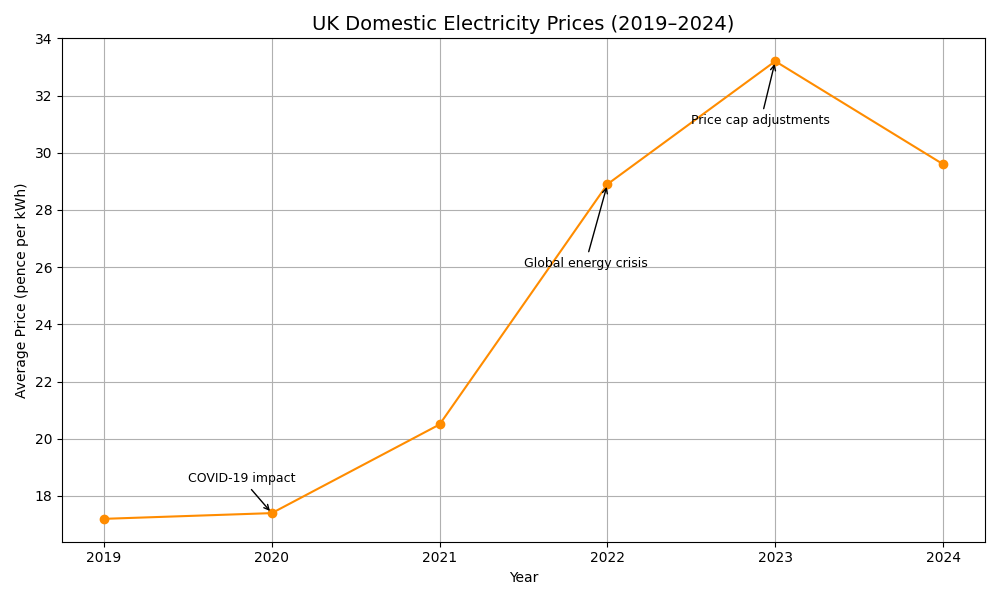UK Energy Charges Over the Past 5 Years.
Over the past five years, UK domestic electricity prices have seen dramatic changes, shaped by global events and regulatory responses. In 2019, the average price stood at 17.2 pence per kWh, reflecting the relatively stable energy market in which we have benefitted for the previous decade.
In 2020, prices remained steady at 17.4 pence per kWh despite the onset of the COVID-19 pandemic. Lockdowns and reduced industrial activity led to lower energy demand, helping to stabilize prices temporarily.
However, by 2021, prices began to climb, reaching 20.5 pence per kWh. This increase was driven by a rebound in global energy demand and supply chain disruptions, which strained energy markets worldwide.
The most significant spike occurred in 2022, when prices surged to 28.9 pence per kWh. This was largely due to the global energy crisis triggered by geopolitical tensions, including the war in Ukraine, which disrupted gas supplies and pushed up wholesale electricity costs.
In 2023, prices peaked at 33.2 pence per kWh, influenced by continued volatility and adjustments to the energy price cap. Government interventions helped cushion the impact on consumers, but affordability remained a concern.
The drop in 2024 showed the slight ease to 29.6 pence per kWh as markets showed signs of stabilizing and renewable energy adoption increased.
The Ofgem energy price cap rose by 2% on October 1st this year, bringing the average annual bill for a typical dual-fuel household to £1,755.
While prices remain higher than pre-pandemic levels, the long-term outlook suggests that consumers that are able to generate and store their own energy through solar panels, battery storage, etc will remain significantly better off than those reliant purely on prices reducing.
Data taken from: Quarterly Energy Prices March 2025


